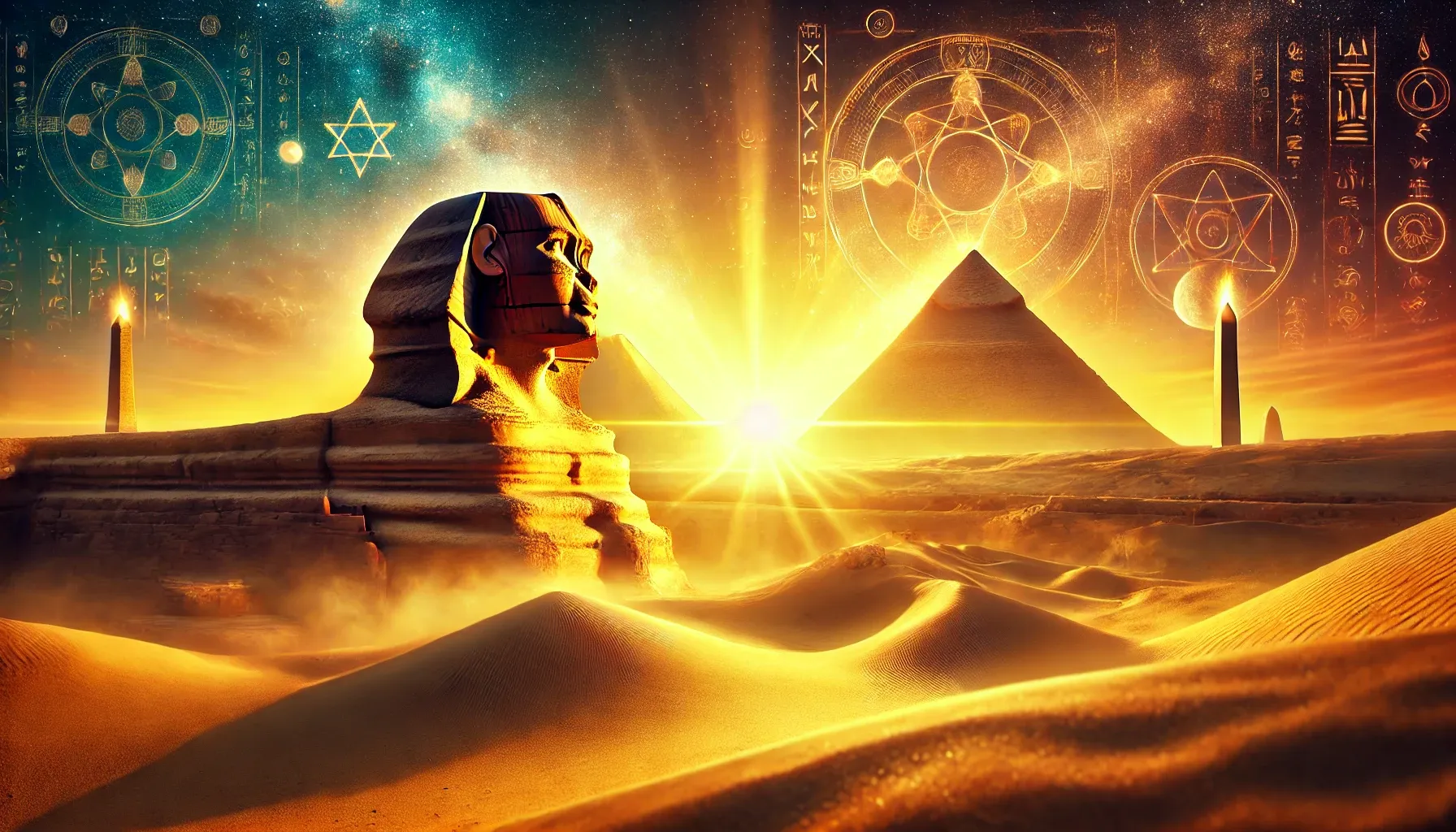
The Ancient Sphinx: Guardian of Secrets and Inspiration for Timeless Legends
The Sphinx stands as a sentinel of time, a colossal figure that has guarded the sands of Egypt for millennia. With its enigmatic expression and awe-inspiring presence, the Sphinx is not only a testament to ancient engineering but also a profound symbol of mystery, power, and cosmic connection.
🦁 A Monument of Majesty and Mystery
The Great Sphinx of Giza, carved from limestone and stretching 73 meters in length, is the largest monolithic statue in the world. Believed to have been constructed during the reign of Pharaoh Khafre around 2500 BCE, its purpose remains one of history’s great enigmas.
The Sphinx combines the strength and majesty of a lion with the intellect and authority of a pharaoh. Positioned to face the rising sun, it is thought to honor Ra, the sun god, while simultaneously serving as a guardian for the necropolis it overlooks.
🌌 A Celestial Guardian
The Sphinx’s alignment with the heavens deepens its symbolic significance. Many scholars theorize that during its construction, the Sphinx faced the constellation Leo, a celestial reflection of its earthly form. This connection to the stars underscores the ancient Egyptians’ belief in harmony between the cosmos and the terrestrial realm.
This celestial association also mirrors broader themes in Egyptian mythology, where gods, humans, and nature were intricately interconnected. The Sphinx acts as a bridge between these worlds, guarding sacred spaces while pointing humanity toward the divine.
🔮 Keeper of Secrets Across Cultures
The Sphinx’s symbolic power extends beyond Egypt. In Greek mythology, the Sphinx posed riddles to travelers, devouring those who failed to answer correctly. This version of the Sphinx became a figure of intellect and danger, embodying the allure and peril of knowledge.
Mesopotamian civilizations, too, featured guardian figures like the Lamassu—part human, part animal—guarding palaces and temples. These parallels suggest a universal human fascination with beings that blur the lines between strength, wisdom, and the divine.
🪐 The Dual Nature of the Sphinx
The Sphinx’s dual nature—half lion, half human—is a vivid representation of balance. Lions, revered for their power and ferocity, symbolize protection and dominion over chaos. The human head, often modeled after a pharaoh, represents intellect, governance, and the pursuit of order.
This duality reflects the ancient Egyptian principle of Ma’at, the concept of cosmic harmony and balance. The Sphinx, as both protector and philosopher, exemplifies this ideal.
🗿 Architectural Marvel and Enduring Symbol
Despite its age and the erosion it has endured, the Sphinx remains a marvel of ancient engineering. Carved directly from bedrock, it was once adorned with vibrant pigments, hinting at its former grandeur. Over time, its image has inspired countless stories, artworks, and legends.
In modern times, the Sphinx continues to captivate, inviting us to ponder the mysteries of ancient civilizations and their understanding of the universe.
🔍 Lessons from the Sphinx
The Sphinx’s story is one of endurance, mystery, and profound symbolism. Here are a few lessons we can draw from its legacy:
- Adaptability: Despite the sands of time, the Sphinx remains an enduring figure of resilience.
- Symbolic Power: The Sphinx reminds us of humanity’s capacity to merge strength and wisdom in the pursuit of balance.
- Cosmic Connection: Its alignment with celestial bodies reflects an ancient understanding of humanity’s place in the cosmos.
📝 The Sphinx as a Timeless Inspiration
The Sphinx is more than a monument—it is a narrative carved into stone, a testament to the ingenuity, spirituality, and mystery of the ancient Egyptians. It continues to inspire questions about the past and reflections on our shared human journey.
As the Sphinx gazes eternally toward the horizon, it invites us to explore our own riddles, urging us to uncover the secrets of history, the cosmos, and ourselves.
What questions would you ask the Sphinx if it could answer? Stay tuned as we uncover more legends and insights from the ancient world!